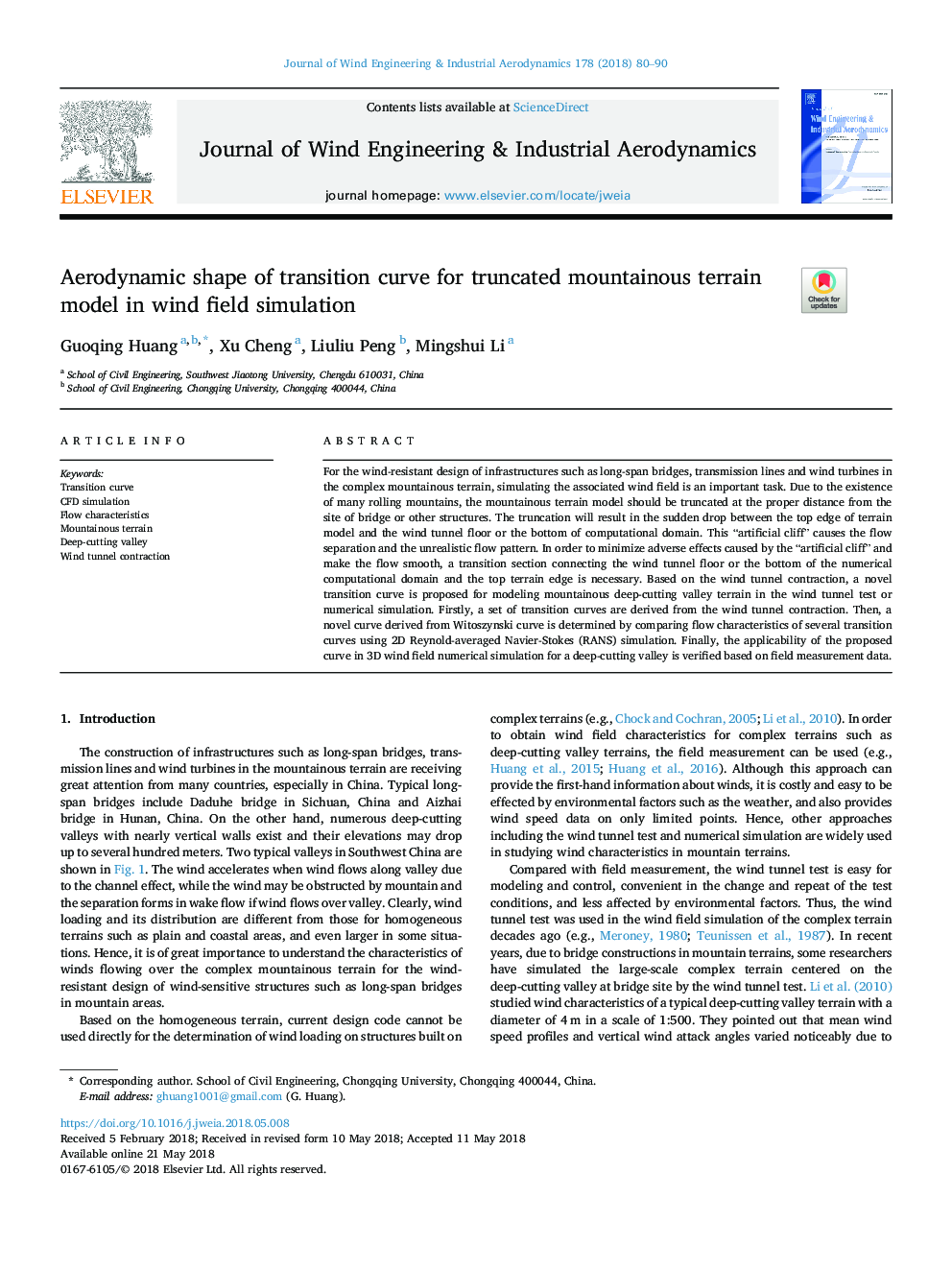| Article ID | Journal | Published Year | Pages | File Type |
|---|---|---|---|---|
| 6756855 | Journal of Wind Engineering and Industrial Aerodynamics | 2018 | 11 Pages |
Abstract
For the wind-resistant design of infrastructures such as long-span bridges, transmission lines and wind turbines in the complex mountainous terrain, simulating the associated wind field is an important task. Due to the existence of many rolling mountains, the mountainous terrain model should be truncated at the proper distance from the site of bridge or other structures. The truncation will result in the sudden drop between the top edge of terrain model and the wind tunnel floor or the bottom of computational domain. This “artificial cliff” causes the flow separation and the unrealistic flow pattern. In order to minimize adverse effects caused by the “artificial cliff” and make the flow smooth, a transition section connecting the wind tunnel floor or the bottom of the numerical computational domain and the top terrain edge is necessary. Based on the wind tunnel contraction, a novel transition curve is proposed for modeling mountainous deep-cutting valley terrain in the wind tunnel test or numerical simulation. Firstly, a set of transition curves are derived from the wind tunnel contraction. Then, a novel curve derived from Witoszynski curve is determined by comparing flow characteristics of several transition curves using 2D Reynold-averaged Navier-Stokes (RANS) simulation. Finally, the applicability of the proposed curve in 3D wind field numerical simulation for a deep-cutting valley is verified based on field measurement data.
Related Topics
Physical Sciences and Engineering
Energy
Renewable Energy, Sustainability and the Environment
Authors
Guoqing Huang, Xu Cheng, Liuliu Peng, Mingshui Li,
